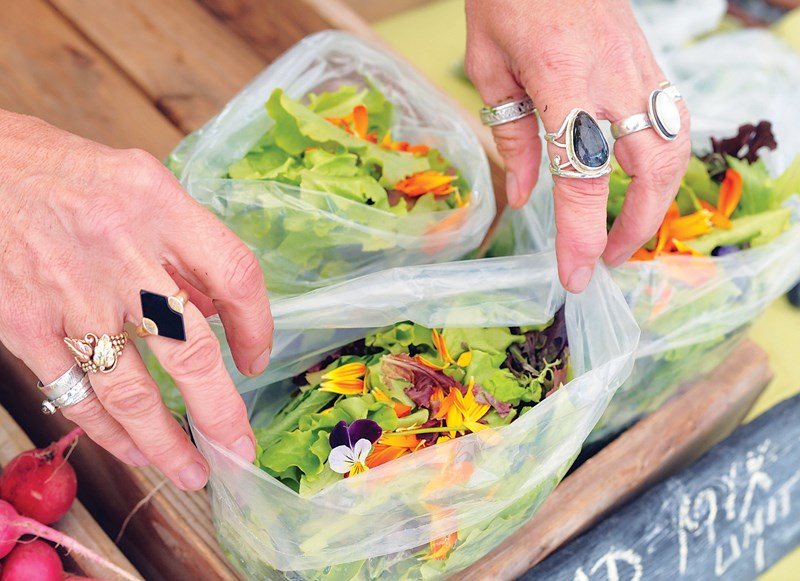After a restful winter it is always nice to see a stack of seed catalogues sitting on my desk.
My go-to seed companies include West Coast Seeds, High Mowing Organic Seeds, Johnny’s Seeds, and Osborne Seed Company. Unfortunately, of those, only West Coast Seeds is a Canadian company.
My new year’s resolution is to get to know and support our local seed suppliers. There are a lot of benefits to buying locally produced seed: you’re supporting a local farmer, the seeds are better adapted to local weather patterns, less contribution to climate change, and it can be less expensive once shipping and currency exchanges are considered.
Here are some of the British Columbian seed suppliers I will be looking into this month as I develop my crop plan and order my seeds: Salt Spring Seeds (saltspringseeds.com), BC Eco Seed Co-op (bcecoseedcoop.com), Planting Seeds Project (plantingseedsproject.ca/seeds.php), and Stellar Seeds (stellarseeds.com). Many of these offer certified organic and GMO-free products – check their websites for details.
This year will be my second growing season at Enderberry Farm in Enderby. I am really looking forward to ramping up production and getting to know our community better.
This will be the first year that we offer a Community Supported Agriculture (CSA) harvest box program. The essence of a CSA program is that customers purchase a share of the harvest at the beginning of the year, which gives the farmer needed, early-season capital and guaranteed customers through the season.
The customer or CSA member benefits by getting a share of the harvest delivered weekly, fresh from the farm. CSAs are a great way to support a local farmer and get amazing fresh food for you and your family. Check out the Farm Folk City Folk website for a listing of CSAs in the Lower Mainland.
As a farmer, there are a lot of reasons to be excited about starting a CSA program. I am excited about balancing the ol’ favourites and staple vegetables with new and interesting ones. Some of the new varieties I’m excited about include yard-long beans, a summer purple sprouting broccoli (no overwintering required!) and long cayenne peppers.
My most exciting experiment for this year will be growing sweet potato. Growing the root vegetable in the northern climates is not new, but I think it is growing in popularity. New varieties require growing seasons as short as 90 days, which, on the wet West Coast, might just be possible if the summer sun pulls through.
I certainly would not depend on this as a staple crop – I think our weather patterns are too unpredictable these days – but it is fun to push the boundaries and experiment. The Old Farmer’s Almanac for 2017 predicts that we will have a warmer-than-usual summer – that’s good for sweet-potato growing!
If you have a large garden plot and don’t mind sprawling plants, then growing sweet potatoes in the ground could work well for you. Use some black tarp or landscape cloth to warm up the soil early.
If your garden is on the small side, you will want to experiment with growing sweet potatoes in soil-filled bags.
You can purchase specialty “grow bags,” or just turn any old tote bag into one by cutting some holes in the bottom for drainage and filling it with a high-quality potting soil and compost mix.
To plant a sweet potato, you will need to purchase sweet potato “slips,” which are kind of like the sprouts that come off potatoes that have been sitting in storage too long. You can order these online or you can grow your own from a store-bought sweet potato.
To grow your own, set an organic sweet potato in a glass of water so it is half submerged and place in a sunny window.
In a few weeks, shoots will grow off the tuber and when they are 15 centimetres long, twist them off and plant in moist soil – these are your slips.
Sweet potatoes like it hot, and you will need to keep the slips consistently moist, but not soggy, while they develop roots.
I hope that you find a fun experiment for your veggie patch this year. Happy gardening!
Emily Jubenvill grew up on the North Shore and is passionate about growing fresh organic food. She’s starting an organic farm, and working for the North Shore Neighbourhood House’s Edible Garden Project.



